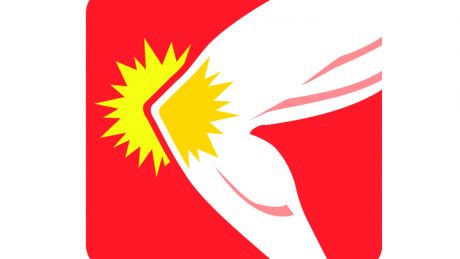How To Injury-Proof Your Knee
Detect the causes of these common problems and follow our expert’s advice to ensure an injured knee never knackers your training

The knee is made up of three compartments held together by the joint capsule, medial and lateral collateral ligaments and the anterior and posterior cruciate ligaments. Although it’s essentially a hinge joint, it is a complex one with many ligaments and muscles working to provide a functional, supportive base for everyday and athletic movements.
Iliotibial band syndrome
‘ITBS is indicated by pain on the outside of your knee when running,’ says Aunger. ‘Causes include incorrect footwear, escalating training too quickly, poor hip alignment and inadequate leg strength. Running multiplies your bodyweight 2.5 times so your legs need to be strong enough to cope with this increased load.’
Prevent it: ‘Get your running shoes professionally fitted at a good running shop. Increase your training gradually, and strengthen your legs with squats and lunges.’
Anterior cruciate ligament rupture
‘ACL tears are often caused by twisting movements where the knee collapses inwards. Causes are numerous but the most common include poor landing mechanics and alignment of the knee and muscle imbalances between the quads and hamstrings.’
Prevent it: ‘The hamstrings are key because they help stabilise the knee and prevent ligament rupture. Many people have strong quads but neglect their hams. Try Nordic hamstring curls: from kneeling with your feet secured or held down by a partner, let your body fall forwards slowly but contract your hamstrings to resist the movement. Also, do low-impact sessions – think cycling and swimming – to avoid weakness in the tissue around the knee and thereby prevent a meniscus tear, which restricts knee movement and often occurs alongside ACL ruptures.’
Patella tendinopathy
‘This is an overload of the patella tendon just below the kneecap. It’s common in high-impact sports such as running, basketball, tennis and football and is often caused by poor training habits and inadequate rest between sessions.’
Prevent it: ‘Swap a road run for a swim or row. This means you don’t overload the tendons and gives them time to recover.’
Get the Coach Newsletter
Sign up for workout ideas, training advice, reviews of the latest gear and more.
Patellafemoral overload
‘Aching around the kneecap is a symptom of patellafemoral overload, which is when the joint surface is overly compressed for long periods. It’s an issue for cyclists and runners and often afflicts people with tight quads.’
Prevent it: ‘You can protect your knee from overload by reducing tightness in your quads. To do this, foam roll the area for ten minutes, then stretch the muscle by holding your heel to your glutes for 60-90 seconds each side. Do this frequently.’
Between 2014 and 2015, Andre Jackson was the web editor of Men’s Fitness UK, which predated and then shared a website with Coach. A love for climbing ropes and boarding slopes, he doesn’t have the most traditional of workout plans but he’s obsessed with finding out how much protein he can get from everything. His favorite gym move is double wave battle ropes, his favorite sports are football and snowboarding, and his personal best is conquering a V6 bouldering climbing wall.
